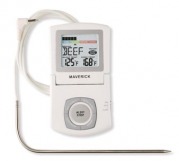A port wine is really a fortified wine and is considered 1 of the world's best wines ever created. The name port comes from the city of Oporto that is situated at the mouth of the 560-mile long Rio Douro or River of Gold in Portugal. Numerous port style wines are made around the world, but the use from the name Port or Porto refers only to wines produced in Portugal, based on intowine.com, a web site dedicated to wine information. Real champagne originates from the Champagne region of France. If not, it has to be known as bubbly instead of champagne. This concept is applicable to port wine as well.
The alcohol to create port wine is under really specific conditions caused from natural and human elements. According to Brian Hay, a chef and culinary instructor at Austin Community College, the process of making port wine is very much the same to producing a red wine; the red grapes are opened and fermented. When wine gets between 5 and 7% alcohol, brandy or a neutral spirit is additional. Whilst it ages in wood, port wine's aroma develops via oxidation with remnants of dried fruit, toasting, wood and spices. The aging process is what can make port wine smooth. The alcohol is then brought up to 18% and 22% alcohol, and then the wine is fortified. The wine ends up having a deep, dark red colour and has a high content of sugar simply because it isn't fermented yet. Usually, the fermentation lasts until it's totally dry, meaning the yeast eats the sugar and coverts it to alcohol. The end product produces a port wine that is a deep red color with a lot of sugar and higher alcohol content. "What can make port so different from red wine is its high alcohol content, which makes it hard to muster if you are not a traditional port wine drinker," says Hays.
There are several types of ports, but the most common are: Ruby, which is a younger port wine that is rich in colour and has a very fruity taste. The age of Ruby is usually two numerous years old. The other one is Tawny, which is a blended wine that is a little older; it has spent three to four years in casks that are called tawny.
Port wine was developed for shipping factors. Hundreds of numerous years ago wine had to become shipped from one country to another. The ships rocked, which caused the barrels holding the wine to leak. When the hot temperatures reached the wine, it went bad. The wine was cooked or was exposed to air causing the wine to turn to vinegar, but if additional alcohol was additional then it took a longer time for the wine to go poor. The additional alcohol prevented bacteria and oxidation. So the wine was fortified and that is how port wine was born, says Hays.
Typically, port wine is served at the end of a meal with dessert. It pairs nicely with chocolate and is regarded to become a fantastic experience when paired together. "Port and chocolate are literally made for every other," says Hays.
For much more information you should visit the port glasses internet site.
The alcohol to create port wine is under really specific conditions caused from natural and human elements. According to Brian Hay, a chef and culinary instructor at Austin Community College, the process of making port wine is very much the same to producing a red wine; the red grapes are opened and fermented. When wine gets between 5 and 7% alcohol, brandy or a neutral spirit is additional. Whilst it ages in wood, port wine's aroma develops via oxidation with remnants of dried fruit, toasting, wood and spices. The aging process is what can make port wine smooth. The alcohol is then brought up to 18% and 22% alcohol, and then the wine is fortified. The wine ends up having a deep, dark red colour and has a high content of sugar simply because it isn't fermented yet. Usually, the fermentation lasts until it's totally dry, meaning the yeast eats the sugar and coverts it to alcohol. The end product produces a port wine that is a deep red color with a lot of sugar and higher alcohol content. "What can make port so different from red wine is its high alcohol content, which makes it hard to muster if you are not a traditional port wine drinker," says Hays.
There are several types of ports, but the most common are: Ruby, which is a younger port wine that is rich in colour and has a very fruity taste. The age of Ruby is usually two numerous years old. The other one is Tawny, which is a blended wine that is a little older; it has spent three to four years in casks that are called tawny.
Port wine was developed for shipping factors. Hundreds of numerous years ago wine had to become shipped from one country to another. The ships rocked, which caused the barrels holding the wine to leak. When the hot temperatures reached the wine, it went bad. The wine was cooked or was exposed to air causing the wine to turn to vinegar, but if additional alcohol was additional then it took a longer time for the wine to go poor. The additional alcohol prevented bacteria and oxidation. So the wine was fortified and that is how port wine was born, says Hays.
Typically, port wine is served at the end of a meal with dessert. It pairs nicely with chocolate and is regarded to become a fantastic experience when paired together. "Port and chocolate are literally made for every other," says Hays.
For much more information you should visit the port glasses internet site.


 RSS Feed
RSS Feed